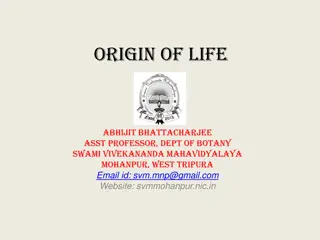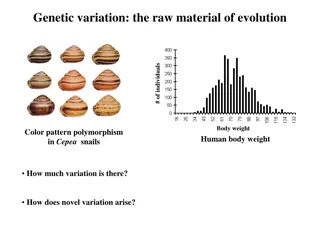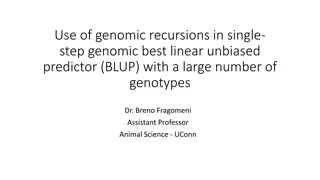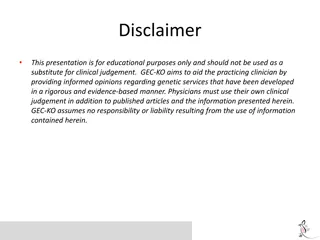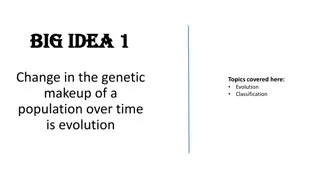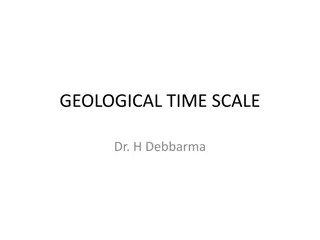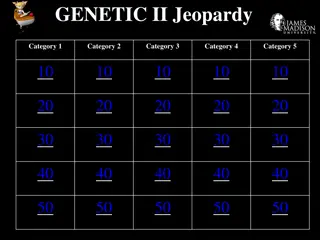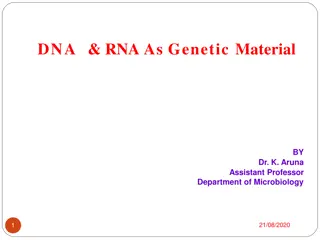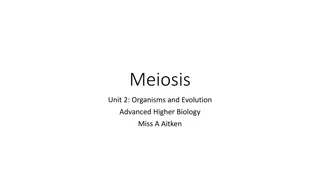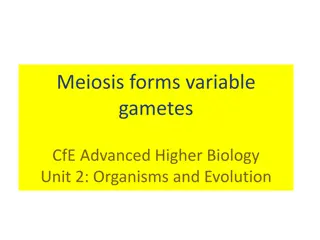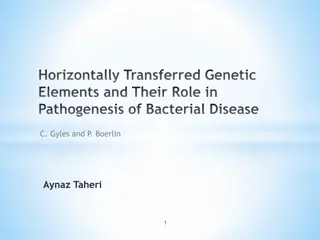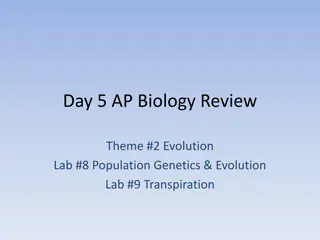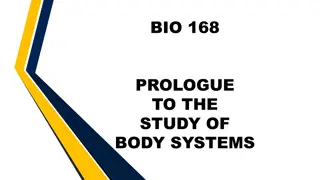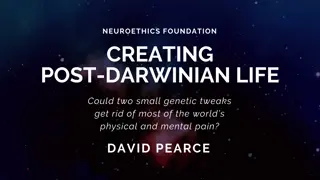Exploring the Early Earth: Origins of Life and Genetic Evolution
Delve into the mysteries of the early Earth and the origin of life through engaging categories such as the absence of certain gases in the atmosphere, the synthesis of amino acids in lab simulations, the formation of protocells using DNA, and the bombardment of space debris. Discover how reducing atmospheres and meteorites played a role in the formation of amino acids and monomers, explore the common traits of protocells, and learn about the significance of ribozymes as the first genetic material. Uncover the evolution towards DNA as the primary hereditary unit, and test your knowledge on scientific concepts such as half-life calculations.
Download Presentation

Please find below an Image/Link to download the presentation.
The content on the website is provided AS IS for your information and personal use only. It may not be sold, licensed, or shared on other websites without obtaining consent from the author. Download presentation by click this link. If you encounter any issues during the download, it is possible that the publisher has removed the file from their server.
E N D
Presentation Transcript
EARTH Jeopardy Category 1 Category 2 Category 3 Category 4 Category 5 10 10 10 10 10 20 20 20 20 20 30 30 30 30 30 40 40 40 40 40 50 50 50 50 50
This gas was absent in the early atmosphere. Oxygen (O2) purple_md_blk
In the lab, Miller and Uhrey were able to synthesize these by simulating early Earth? amino acids purple_md_blk
DAILY DOUBLE Scientists have formed liposomes and organic compounds in the lab but never this . protocells using DNA purple_md_blk
Early earth had water only as vapor, an unsettled atomosphere, and this bombarding it constantly Space debris purple_md_blk
A reducing atmosphere was the likely source of the first amino acids, but another possibility was this meteorites purple_md_blk
The building units of polymers. monomers purple_md_blk
One characteristic all protocells had in common Enclosed by a membrane purple_md_blk
_____was the first genetic material found in the protocells and were autocatalyzing. ribozymes purple_md_blk
Why did cells eventually evolve DNA as the major hereditary unit? More stable and less error prone purple_md_blk
If half life is 200 years, how old is a fossil in which 1/8th is left? 3 half lives so 200x3 = 600 years purple_md_blk
How many half lives have elapsed if 12.5% of the parent isotope is left? 3 (1/8) purple_md_blk
How far back does the fossil record extend? 3.5 billion years purple_md_blk
An early consequence of the release of Oxygen by the first photosynthetic organisms Rusted iron in the ocean and in rocks purple_md_blk
What organism was the biggest contributor to forming the Earth s oxidizing atmosphere? cyanobacteria purple_md_blk
Main difference between prokaryote and eukaryote cells. Prokaryotes have no nucleus Prokaryotes have no nucleus purple_md_blk
Strongest evidence that prokaryotes Evolved first? Early fossilized cells resemble prokaryotes purple_md_blk
The first major diversification of Multicellular organisms coincided with the end of what? Snowball Earth purple_md_blk
Give 2 pieces of Evidence of the endosymbiont theory? 1. Mitochondria and chloroplasts have own DNA and ribosomes similar to prokaryotes. 2. Internal organelle membrane structure similar to prokayotes purple_md_blk
What do we call the explosion of life after Snowball Earth? Cambrian Explosion purple_md_blk
If two continents collide, this will decrease what ecosystem? Coastline and intertidal zone purple_md_blk
The most recent supercontinent Pangea purple_md_blk
The main component of the cell membrane phospholipid purple_md_blk
Class of homeotic genes that control the positioning and development of body parts in the embryo Hox genes purple_md_blk
When genes lead to the retention of juvenile characteristics in adulthood paedomorphosis purple_md_blk
Hox genes belong to a larger class Of genes that control the body plan Homeotic genes purple_md_blk




